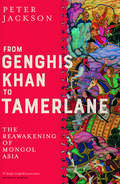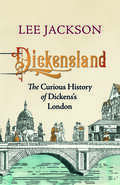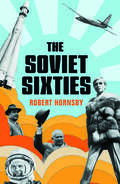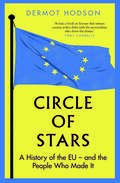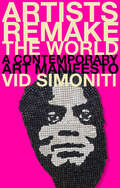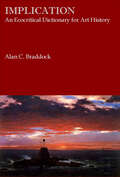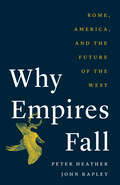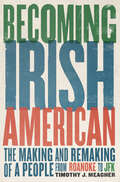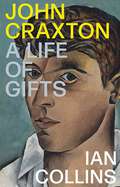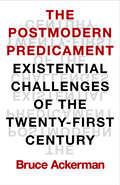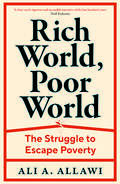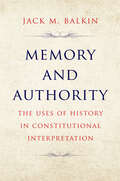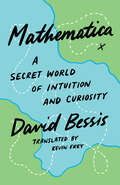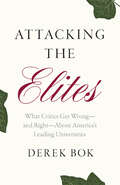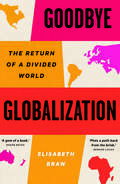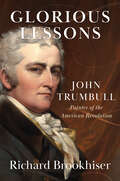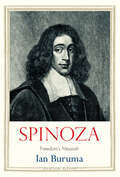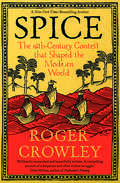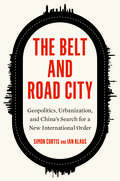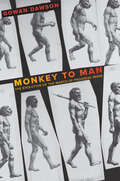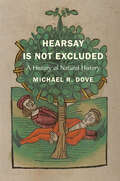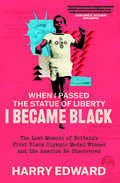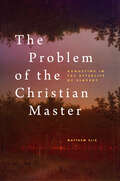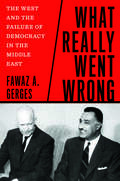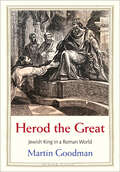- Table View
- List View
From Genghis Khan to Tamerlane: The Reawakening of Mongol Asia
by Peter JacksonAn epic account of how a new world order under Tamerlane was born out of the decline of the Mongol Empire By the mid-fourteenth century, the world empire founded by Genghis Khan was in crisis. The Mongol Ilkhanate had ended in Iran and Iraq, China’s Mongol rulers were threatened by the native Ming, and the Golden Horde and the Central Asian Mongols were prey to internal discord. Into this void moved the warlord Tamerlane, the last major conqueror to emerge from Inner Asia. In this authoritative account, Peter Jackson traces Tamerlane’s rise to power against the backdrop of the decline of Mongol rule. Jackson argues that Tamerlane, a keen exponent of Mongol custom and tradition, operated in Genghis Khan’s shadow and took care to draw parallels between himself and his great precursor. But, as a Muslim, Tamerlane drew on Islamic traditions, and his waging of wars in the name of jihad, whether sincere or not, had a more powerful impact than those of any Muslim Mongol ruler before him.
Dickensland: The Curious History of Dickens's London
by Lee JacksonThe intriguing history of Dickens’s London, showing how tourists have reimagined and reinvented the Dickensian metropolis for more than 150 years Tourists have sought out the landmarks, streets, and alleys of Charles Dickens’s London ever since the death of the world-renowned author. Late Victorians and Edwardians were obsessed with tracking down the locations—dubbed “Dickensland”—that famously featured in his novels. But his fans were faced with a city that was undergoing rapid redevelopment, where literary shrines were far from sacred. Over the following century, sites connected with Dickens were demolished, relocated, and reimagined. Lee Jackson traces the fascinating history of Dickensian tourism, exploring both real Victorian London and a fictional city shaped by fandom, tourism, and heritage entrepreneurs. Beginning with the late nineteenth century, Jackson investigates key sites of literary pilgrimage and their relationship with Dickens and his work, revealing hidden, reinvented, and even faked locations. From vanishing coaching inns to submerged riverside stairs, hidden burial grounds to apocryphal shops, Dickensland charts the curious history of an imaginary world.
The Soviet Sixties
by Robert HornsbyThe story of a remarkable era of reform, controversy, optimism, and Cold War confrontation in the Soviet Union Beginning with the death of Stalin in 1953, the “sixties” era in the Soviet Union was just as vibrant and transformative as in the West. The ideological romanticism of the revolutionary years was revived, with renewed emphasis on egalitarianism, equality, and the building of a communist utopia. Mass terror was reined in, great victories were won in the space race, Stalinist cultural dogmas were challenged, and young people danced to jazz and rock and roll. Robert Hornsby examines this remarkable and surprising period, showing that, even as living standards rose, aspects of earlier days endured. Censorship and policing remained tight, and massacres during protests in Tbilisi and Novocherkassk, alongside invasions of Hungary and Czechoslovakia, showed the limits of reform. The rivalry with the United States reached perhaps its most volatile point, friendship with China turned to bitter enmity, and global decolonization opened up new horizons for the USSR in the developing world. These tumultuous years transformed the lives of Soviet citizens and helped reshape the wider world.
Circle of Stars: A History of the EU and the People Who Made It
by Dermot HodsonA compelling new history of the EU and the people who sought to shape and challenge it—from Maastricht to today The European Union is the most ambitious, and one of the most contentious, international organizations ever created. Decisions made in Brussels shape the lives of over 500 million Europeans, and its laws and policies resonate around the world. But how has the EU endured over three turbulent decades marred by crises at home and abroad? In this major account, Dermot Hodson traces the development of the EU from its establishment in 1993 through to Brexit, Covid-19, and the invasion of Ukraine. Hodson shows how the union has been held together not by faceless technocrats but national leaders who stood together in times of turmoil despite a fierce backlash from a new generation of right-wing populists. Circle of Stars offers a rich appraisal of Europe’s troubled past and turbulent present—focusing on the people who built the EU as we know it today.
Artists Remake the World: A Contemporary Art Manifesto
by Vid SimonitiAn original and provocative exploration of the relationship between contemporary art, politics, and activism Artists Remake the World introduces readers to the political ambitions of contemporary art in the early twenty-first century and puts forward a new, wide-ranging account of art’s political potential. Surveying such innovations as evidence-driven art, socially engaged art, and ecological art, the book explores how artists have attempted to offer bold solutions to the world’s problems. Vid Simoniti offers original perspectives on contemporary art and its capacity as a force for political and social change. At its best, he argues, contemporary art allows us to imagine utopias and presents us with hard truths, which mainstream political discourse cannot yet articulate. Covering subjects such as climate change, social justice, and global inequality, Simoniti introduces the reader to a host of visionary contemporary artists from across the globe, including Ai Weiwei, Olafur Eliasson, Wangechi Mutu, Naomi Rincón Gallardo, and Hito Steyerl. Offering a philosophy of contemporary art as an experimental branch of politics, the book equips the reader with a new critical apparatus for thinking about political art today.
Implication: An Ecocritical Dictionary for Art History
by Alan C. BraddockReaders of Implication will come away convinced that all art—regardless of historical period, context, genre, or medium—has an ecological connection to the world in which it was createdEcocriticism is an interdisciplinary mode of inquiry that examines the environmental significance of art, literature, and other creative endeavors. In Implication: An Ecocritical Dictionary for Art History, Alan C. Braddock, a pioneer in art historical ecocriticism, presents a fascinating group of key terms and case studies to demonstrate that all art is ecological in its interconnectedness with the world.The book adopts a dictionary-style format, although not in a conventional sense. Drawing inspiration from French surrealist writer Georges Bataille, this dictionary presents carefully selected words that link art history to the environmental humanities—not only ecocriticism, but also environmental history, science, politics, and critical animal studies. A wide array of creative works from different cultures and time periods reveal the import of these terms and the inescapable entanglement of art with ecology. Ancient Roman mosaics, Song dynasty Taihu rocks, a Tlaxcalan lienzo, early modern European engravings and altarpieces, a Kongo dibondo, nineteenth-century landscape paintings by African American artist Edward Mitchell Bannister, French Impressionist urban scenes, and contemporary activist art, among other works, here disclose the intrinsic ecological conditions of art.
Why Empires Fall: Rome, America, and the Future of the West
by Peter Heather John RapleyA new perspective on parallels between ancient Rome and the modern world, and what comes next “[A] provocative short book . . . with a novel twist.”—The Economist Over the last three centuries, the West rose to dominate the planet. Then, around the start of the new millennium, history took a dramatic turn. Faced with economic stagnation and internal political division, the West has found itself in rapid decline compared to the global periphery it had previously colonized. This is not the first time we have seen such a rise and fall: the Roman Empire followed a similar arc, from dizzying power to disintegration. Historian Peter Heather and political economist John Rapley explore the uncanny parallels, and productive differences between ancient Rome and the modern West, moving beyond the tropes of invading barbarians and civilizational decay to unearth new lessons. From 399 to 1999, they argue, through the unfolding of parallel, underlying imperial life cycles, both empires sowed the seeds of their own destruction. Has the era of Western global domination indeed reached its end? Heather and Rapley contemplate what comes next.
Becoming Irish American: The Making and Remaking of a People from Roanoke to JFK
by Timothy J. MeagherThe origins and evolution of Irish American identity, from colonial times through the twentieth century As millions of Irish immigrants and their descendants created community in the United States over the centuries, they neither remained Irish nor simply became American. Instead, they created a culture and defined an identity that was unique to their circumstances, a new people that they would continually reinvent: Irish Americans. Historian Timothy J. Meagher traces the Irish American experience from the first Irishman to step ashore at Roanoke in 1585 to John F. Kennedy’s election as president in 1960. As he chronicles how Irish American culture evolved, Meagher looks at how various groups adapted and thrived—Protestants and Catholics, immigrants and American born, those located in different geographic corners of the country. He describes how Irish Americans made a living, where they worshiped, and when they married, and how Irish American politicians found particular success, from ward bosses on the streets of New York, Boston, and Chicago to the presidency. In this sweeping history, Meagher reveals how the Irish American identity was forged, how it has transformed, and how it has held lasting influence on American culture.
John Craxton: A Life of Gifts
by Ian CollinsUplifting and engaging, this story recounts the life and career of a rebellious 20th-century British artistBorn into a large, musical, and bohemian family in London, the British artist John Craxton (1922–2009) has been described as a Neo-Romantic, but he called himself a “kind of Arcadian”. His early art was influenced by Blake, Palmer, Miró, and Picasso. After achieving a dream of moving to Greece, his work evolved as a personal response to Byzantine mosaics, El Greco, and the art of Greek life. This book tells his adventurous story for the first time. At turns exciting, funny, and poignant, the saga is enlivened by Craxton’s ebullient pictures. Ian Collins expands our understanding of the artist greatly—including an in-depth exploration of the storied, complicated friendship between Craxton and Lucian Freud, drawing on letters and memories that Craxton wanted to remain private until after his death.
The Postmodern Predicament: Existential Challenges of the Twenty-First Century
by Bruce AckermanOne of our most influential political theorists offers a boundary-breaking—and liberating—perspective on the meaning of life in the internet age Human beings have taken one thing for granted since our earliest days: we are bodily creatures dealing with one another on a face-to-face basis. The internet has shattered this fundamental feature of human existence. We are suddenly living our lives in two worlds at once—shifting endlessly from virtual to physical reality as we reach out to others. Worse yet, we are developing different personal identities in our two worlds. We say and do things in virtual reality that flatly contradict our face-to-face commitments to family, friends, and fellow-workers—and vice versa. The Postmodern Predicament explores these dilemmas at each phase of the life cycle, beginning at the moment a young child picks up a cell phone. The existentialist tradition of the twentieth century provides a precious perspective on our postmodern dilemmas. Thinkers and doers like Simone de Beauvoir and Jean-Paul Sartre considered the fragmentation of modern life as a central source of contemporary anxieties. Like them, Ackerman views the challenges of the internet age as a political, no less than personal, problem—and proposes concrete reforms that that could mobilize broad-based support for democracy against demagogic assaults on its very foundations.
Rich World, Poor World: The Struggle to Escape Poverty
by Ali A. AllawiA landmark history of the world economic order, exploring how developing countries have fought to escape impoverishment Over the past two decades, experiments in neoliberal economics have opened up a chasm of inequality between the Global South and the West. Development advice from richer nations has led to social upheaval, political unrest, environmental degradation—and even the creation of a new underclass. Brutal extremes of wealth and poverty are now commonplace. Ali A. Allawi traces the evolution of the world economic order from the late imperial era to the present day. Shedding light on continuing controversies, Allawi shows how the process of development has been hindered at every turn, from poor leadership and lost opportunities to widespread corruption. In doing so, he argues that the current neoliberal consensus is only the most recent of a series of failed policy imperatives. Covering issues in the Global South as well as failures in the West, this definitive account offers an impassioned and authoritative call for change.
Memory and Authority: The Uses of History in Constitutional Interpretation (Yale Law Library Series in Legal History and Reference)
by Jack M. BalkinFrom one of the nation’s preeminent constitutional scholars, a sweeping rethinking of the uses of history in constitutional interpretation Fights over history are at the heart of most important constitutional disputes in America. The Supreme Court’s current embrace of originalism is only the most recent example of how lawyers and judges try to use history to establish authority for their positions. Jack M. Balkin argues that fights over constitutional interpretation are often fights over collective memory. Lawyers and judges construct—and erase—memory to lend authority to their present-day views; they make the past speak their values so they can then claim to follow it. The seemingly opposed camps of originalism and living constitutionalism are actually mirror images of a single phenomenon: how lawyers use history to adapt an ancient constitution to a constantly changing world. Balkin shows how lawyers and judges channel history through standard forms of legal argument that shape how they use history and even what they see in history. He explains how lawyers and judges invoke history selectively to construct authority for their claims and undermine the authority of opposing views. And he elucidates the perpetual quarrel between historians and lawyers, showing how the two can best join issue in legal disputes. This book is a sweeping rethinking of the uses of history in constitutional interpretation.
Mathematica: A Secret World of Intuition and Curiosity
by David BessisA fascinating look into how the transformative joys of mathematical experience are available to everyone, not just specialists Math has a reputation for being inaccessible. People think that it requires a special gift or that comprehension is a matter of genes. Yet the greatest mathematicians throughout history, from René Descartes to Alexander Grothendieck, have insisted that this is not the case. Like Albert Einstein, who famously claimed to have “no special talent,” they said that they had accomplished what they did using ordinary human doubts, weaknesses, curiosity, and imagination. David Bessis guides us on an illuminating path toward deeper mathematical comprehension, reconnecting us with the mental plasticity we experienced as children. With simple, concrete examples, Bessis shows how mathematical comprehension is integral to the great learning milestones of life, such as learning to see, to speak, to walk, and to eat with a spoon. Focusing on the deeply human roots of mathematics, Bessis dispels the myths of mathematical genius. He offers an engaging initiation into the experience of math not as a series of discouragingly incomprehensible logic problems but as a physical activity akin to yoga, meditation, or a martial art. This perspective will change the way you think not only about math but also about intelligence, intuition, and everything that goes on inside your head.
Attacking the Elites: What Critics Get Wrong—and Right—About America's Leading Universities
by Derek BokA former Harvard president reflects on how elite universities are responding to critiques from the left and the right, and how they can do better Elite American universities, such as Yale, Harvard, and Princeton, are admired throughout the world. They attract highly qualified applicants, and most of their graduates go on to lead successful lives. Scholars and researchers at elite universities contribute to knowledge that benefits the public in countless ways, from the discovery of ancient texts to breakthroughs at the forefront of medical technology. These same elite institutions, however, are beset by criticism from both sides of America’s ideological divide. Liberals press them to enroll more low-income students and to use their reputations and endowments to induce corporations to adopt more just, equitable, and environmentally sound policies. Conservative politicians accuse the universities’ predominantly liberal faculty of indoctrinating students. The Supreme Court has recently prohibited universities from giving preference to Black and Hispanic applicants for admission, sparking a wider debate over the policies of elite universities in choosing their student body. Drawing on over fifty years of experience as a student, professor, dean, and president of Harvard University, Derek Bok examines the current disputes involving admissions, diversity, academic freedom and political correctness, curriculum and teaching, and even athletics in order to determine which complaints are unsubstantiated, which are valid, and how elite universities can best respond to their critics.
Goodbye Globalization: The Return of a Divided World
by Elisabeth BrawA bold new account of the state of globalization today—and what its collapse might mean for the world economy After the Cold War, globalization accelerated at breakneck speed. Manufacturing, transport, and consumption defied national borders, companies made more money, and consumers had access to an ever-increasing range of goods. But in recent years, a profound shift has begun to take place. Business executives and politicians alike are realising that globalization is no longer working. Supply chains are imperilled, Russia has been expelled from the global economy after its invasion of Ukraine, and China is using these fissures to leverage a strategic advantage. Given these pressures, what will the future of our world economy look like? In this groundbreaking account, Elisabeth Braw explores the collapse of globalization and the profound challenges it will bring to the West. Drawing on interviews with prominent executives and policymakers from around the world, Braw poses the difficult questions all businesses and economies will face—and traces the intricate story of globalization from the exuberant ’90s to the embattled present.
Glorious Lessons: John Trumbull, Painter of the American Revolution
by Richard BrookhiserThe complicated life and legacy of John Trumbull, whose paintings portrayed both the struggle and the principles that distinguished America’s founding moment John Trumbull (1756–1843) experienced the American Revolution firsthand—he served as aid to George Washington and Horatio Gates, was shot at, and was jailed as a spy. He made it his mission to record the war, giving visual form to what most citizens of the new United States thought: that they had brought into the world a great and unprecedented political experiment. His purpose, he wrote, was “to preserve and diffuse the memory of the noblest series of actions which have ever presented themselves in the history of man.” Although Trumbull’s contemporaries viewed him as a painter, Trumbull thought of himself as a historian. Richard Brookhiser tells Trumbull’s story of acclaim and recognition, a story complicated by provincialism, war, a messy personal life, and, ultimately, changing fashion. He shows how the artist’s fifty-year project embodied the meaning of American exceptionalism and played a key role in defining the values of the new country. Trumbull depicted the story of self-rule in the modern world—a story as important and as contested today as it was 250 years ago.
Spinoza: Freedom's Messiah (Jewish Lives)
by Ian BurumaIan Buruma explores the life and death of Baruch Spinoza, the Enlightenment thinker whose belief in freedom of thought and speech resonates in our own time Baruch (Benedictus) Spinoza (1632–1677) was a radical free thinker who led a life guided by strong moral principles despite his disbelief in an all-seeing God. Seen by many—Christians as well as Jews—as Satan’s disciple during his lifetime, Spinoza has been regarded as a secular saint since his death. Many contradictory beliefs have been attached to his name: rationalism or metaphysics, atheism or pantheism, liberalism or despotism, Jewishness or anti-Semitism. However, there is no question that he viewed freedom of thought and speech as essential to an open and free society. In this insightful account, the award-winning author Ian Buruma stresses the importance of the time and place that shaped Spinoza, beginning with the Sephardim of Amsterdam and followed by the politics of the Dutch Republic. Though Spinoza rejected the basic assumptions of his family’s faith, and was consequently expelled from his Sephardic community, Buruma argues that Spinoza did indeed lead a Jewish life: a modern Jewish life. To Heine, Hess, Marx, Freud, and no doubt many others today, Spinoza exemplified how to be Jewish without believing in Judaism. His defense of universal freedom is as important for our own time as it was in his.
Spice: The 16th-Century Contest that Shaped the Modern World
by Roger CrowleyThe story of the sixteenth-century’s epic contest for the spice trade, which propelled European maritime exploration and conquest across Asia and the Pacific Spices drove the early modern world economy, and for Europeans they represented riches on an unprecedented scale. Cloves and nutmeg could reach Europe only via a complex web of trade routes, and for decades Spanish and Portuguese explorers competed to find their elusive source. But when the Portuguese finally reached the spice islands of the Moluccas in 1511, they set in motion a fierce competition for control. Roger Crowley shows how this struggle shaped the modern world. From 1511 to 1571, European powers linked up the oceans, established vast maritime empires, and gave birth to global trade, all in the attempt to control the supply of spices. Taking us on voyages from the dockyards of Seville to the vastness of the Pacific, the volcanic Spice Islands of Indonesia, the Arctic Circle, and the coasts of China, this is a narrative history rich in vivid eyewitness accounts of the adventures, shipwrecks, and sieges that formed the first colonial encounters—and remade the world economy for centuries to follow.
The Belt and Road City: Geopolitics, Urbanization, and China's Search for a New International Order
by Simon Curtis Ian KlausAn exploration of how China’s Belt and Road Initiative seeks to reshape international order and how it has catalyzed a new era of infrastructural geopolitics Over the past decade China has put infrastructural and urban development at the heart of a strategy aimed at nothing less than the transformation of international order. The Belt and Road Initiative, which seeks to revitalize and reconnect the ancient Silk Roads that linked much of the world before the rise of the West, is an attempt to place China at the center of this new international order, one shaped by Chinese power, norms, and values. It seeks to do so, in part, by shaping our shared urban future. Simon Curtis and Ian Klaus explore how China’s specific investments in urban development—cities, roads, railways, ports, digital and energy connectivity—are directly linked to its foreign policy goals. Curtis and Klaus examine the implications of these developments as they evolve across the vast Afro-Eurasian region. The distinctive model of international order and urban life emerging with the rise of Chinese power and influence offers a potential rival to the one that has accompanied the rise and zenith of Western power, marking a new age of infrastructural geopolitics and Great Power competition.
Monkey to Man: The Evolution of the March of Progress Image
by Gowan DawsonThe first book to examine the iconic depiction of evolution, the "march of progress," and its role in shaping our understanding of how humans evolved We are all familiar with the "march of progress," the representation of evolution that depicts a series of apelike creatures becoming progressively taller and more erect before finally reaching the upright human form. Its emphasis on linear progress has had a decisive impact on public understanding of evolution, yet the image contradicts modern scientific conceptions of evolution as complex and branching. This book is the first to examine the origins and history of this ubiquitous and hugely consequential illustration. In a story spanning more than a century, from Victorian Britain to America in the Space Age, Gowan Dawson traces the interconnected histories of the two most important versions of the image: the frontispiece to Thomas Henry Huxley’s Evidence as to Man’s Place in Nature (1863) and "The Road to Homo Sapiens," a fold-out illustration in the best-selling book Early Man (1965). Dawson explores how the recurring appearances of this image pointed to shifting scientific and public perspectives on human evolution, as well as indicated novel artistic approaches and advancements in technology.
Hearsay Is Not Excluded: A History of Natural History (Yale Agrarian Studies Series)
by Michael R. DoveThis chronicle of natural history argues that the modern environmental crisis and rise in science skepticism codeveloped with the rise of ever narrower scientific disciplines For millennia, the field of natural history promoted a knowledgeable and unifying view of the world. In contrast, the modern rise of narrow scientific disciplines has promoted a dichotomy between nature and culture on the one hand and between scientific and folk knowledge on the other. Drawing on the fields of anthropology, history, and environmental science, Michael R. Dove argues that the loss of this historic holistic vision of the world is partly to blame for contemporary environmental degradation and science skepticism. Dove bases this thesis on a study of four pioneering natural historians across four centuries: Georg Eberhard Rumphius (seventeenth century), Carl Linnaeus (eighteenth century), Alfred Russel Wallace (nineteenth century), and Harold C. Conklin (twentieth century). Dove studies their field craft and writing; the political, cultural, and environmental circumstances in which they worked; the sources of their insight; and the implications of their work for modern society. Most of all, the book seeks to discover what enabled those natural historians to straddle boundaries that today seem impassable and to distill that wisdom for a modern world greatly in need of a holistic vision of people and environment.
When I Passed the Statue of Liberty I Became Black
by Harry Edward"Harry Edward was a hugely talented athlete and an extraordinary man who fought all his life for justice and fairness in the face of repeated prejudice. His story is as powerful today as it was when he lived it and I urge everyone to read this book"—Linford Christie, 1992 Olympic 100m Champion The lost memoir of Britain’s first Black Olympic medal winner—and the America he discovered After winning Olympic medals for Britain in 1920, Harry Edward (1898–1973) decided to try his luck in America. The country he found was full of thrilling opportunity and pervasive racism. Immensely capable and energetic, Harry rubbed shoulders with kings and presidents, was influential in the revival of Black theatre during the Harlem Renaissance, and became a passionate humanitarian and advocate for child welfare. He was present at some of the twentieth century’s most significant moments, worked alongside W. E. B. Du Bois and Orson Welles, and witnessed two world wars and the civil rights movement. Yet he was frustrated at almost every turn. Toward the end of his life he set down his story, crafting this memoir of athletics and activism, race and racism on both sides of the Atlantic. His manuscript went unpublished until now. This is the deeply engaging tale of Edward’s life—and a moving testament to his drive to form a better world.
The Problem of the Christian Master: Augustine in the Afterlife of Slavery
by Matthew EliaA bold rereading of Augustinian thought for a world still haunted by slavery Over the last two decades, scholars have made a striking return to the resources of the Augustinian tradition to theorize citizenship, virtue, and the place of religion in public life. However, these scholars have not sufficiently attended to Augustine’s embrace of the position of the Christian slaveholder. To confront a racialized world, the modern Augustinian tradition of political thought must reckon with its own entanglements with the afterlife of the white Christian master. Drawing Augustine’s politics and the resources of modern Black thought into extended dialogue, Matthew Elia develops a critical analysis of the enduring problem of the Christian master, even as he presses toward an alternative interpretation of key concepts of ethical life—agency, virtue, temporality—against and beyond the framework of mastery. Amid democratic crises and racial injustice on multiple fronts, the book breathes fresh life into conversations on religion and the public square by showing how ancient and contemporary sources at once clash and converge in surprising ways. It imaginatively carves a path forward for the enduring humanities inquiry into the nature of our common life and the perennial problem of social and political domination.
What Really Went Wrong: The West and the Failure of Democracy in the Middle East
by Fawaz A. GergesAn ambitious revisionist history of the modern Middle East What Really Went Wrong offers a fresh and incisive assessment of American foreign policy’s impact on the history and politics of the modern Middle East. Looking at flashpoints in Iranian, Egyptian, Syrian, and Lebanese history, Fawaz A. Gerges shows how postwar U.S. leaders made a devil’s pact with potentates, autocrats, and strongmen around the world. Washington sought to tame assertive nationalists and to protect repressive Middle Eastern regimes in return for compliance with American hegemonic designs and uninterrupted flows of cheap oil. The book takes a counterfactual approach, asking readers to consider how the political trajectories of these countries and, by extension, the entire region may have differed had U.S. foreign policy privileged the nationalist aspirations of patriotic and independent Middle Eastern leaders and people. Gerges argues that rather than focusing on rolling back communism, extracting oil, and pursuing interventionist and imperial policies in Iran, Egypt, and beyond, postwar U.S. leaders should have allowed the Middle East greater autonomy in charting its own political and economic development. In so doing, the contemporary Middle East may have had better prospects for stability, prosperity, peace, and democracy.
Herod the Great: Jewish King in a Roman World (Jewish Lives)
by Martin GoodmanA vivid account of the political triumphs and domestic tragedies of the Jewish king Herod the Great during the turmoil of the Roman revolution Herod the Great (73–4 BCE) was a phenomenally energetic ruler who took advantage of the chaos of the Roman revolution to establish himself as a major figure in a changing Roman world and transform the landscape of Judaea. Both Jews and Christians developed myths about his cruelty and rashness: in Christian tradition he was cast as the tyrant who ordered the Massacre of the Innocents; in the Talmud, despite fond memories of his glorious Temple in Jerusalem, he was recalled as a persecutor of rabbis. The life of Herod is better documented than that of any other Jew from antiquity, and Martin Goodman examines the extensive literary and archaeological evidence to provide a vivid portrait of Herod in his sociopolitical context: his Idumaean origins, his installation by Rome as king of Judaea and cultivation of leading Romans, his massive architectural projects, and his presentation of himself as a Jew, most strikingly through the rebuilding of the Jerusalem Temple. Goodman argues that later stories depicting Herod as a monster derived from public interest in his execution of three of his sons after dramatic public trials foisted on him by a dynastic policy imposed by the Roman emperor.
